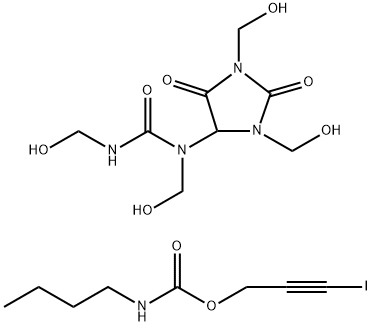No products in the cart.: $0.00
Germall Plus

Germall Plus is a broad-spectrum preservative used in cosmetics and skincare products to prevent microbial contamination, such as bacteria, yeast, and mold growth. It’s a patented blend designed by Ashland, marketed as Liquid Germall™ Plus, and is popular in DIY and commercial formulations for its effectiveness and ease of use. It keeps products like lotions, creams, and shampoos safe and stable over time.
What is it Made of?
Germall Plus is a liquid mixture of three key ingredients:
-
- Propylene Glycol (about 60%): A humectant and solvent that dissolves the other components and aids in product texture.
- Diazolidinyl Urea (around 30–40%): A formaldehyde-releasing antimicrobial that targets bacteria and fungi.
- Iodopropynyl Butylcarbamate (IPBC) (less than 1%): A potent fungicide that enhances the blend’s mold and yeast protection.
These combine to form a clear, viscous liquid used at low concentrations (0.1%–0.5%) in formulations.
Best Skin Type for Using It:
Germall Plus isn’t applied directly to skin—it’s a preservative in products—so its suitability depends on tolerance rather than skin type benefits:
-
- Sensitive Skin: Generally well-tolerated, but some may react to formaldehyde releasers or IPBC—patch testing is wise if you’re prone to irritation.
- All Skin Types: Safe at recommended levels (up to 0.5%) in most products, from oily to dry, as it’s non-comedogenic and doesn’t alter skin function.
- Oily/Acne-Prone: Fine, as it doesn’t clog pores, though it won’t treat acne itself.
- Dry/Mature: Neutral—its effect depends on the product it preserves, not the preservative.
Avoid:
- Sensitive Skin: Generally well-tolerated, but some may react to formaldehyde releasers or IPBC—patch testing is wise if you’re prone to irritation.
- Damaged Skin: Potential stinging on broken skin.
Benefits of Germall Plus
Germall Plus supports product safety, not skin directly:
-
- Broad-Spectrum Protection: Guards against bacteria, yeast, and mold, ensuring product longevity.
- Low Concentration Efficacy: Effective at 0.1%–0.5%, minimizing potential irritation while maximizing preservation.
- pH Versatility: Works in water-based and emulsion products (lotions, creams, shampoos) across a wide pH range (3–8).
- Stability: Keeps formulations fresh without degrading active ingredients.
Pros and Cons of Germall Plus
Pros:
-
- Compatibility: Works in creams, lotions, shampoos, and serums.
- Highly Effective: Robust microbial protection at tiny amounts.
- Easy to Use: Pre-dissolved liquid blends seamlessly into formulations.
- Paraben-Free: Appeals to those avoiding parabens, though it’s still synthetic.
- Regulatory Approval: Approved by the CIR (Cosmetic Ingredient Review) at ≤0.5%.
Cons:
-
- Formaldehyde Concerns: Diazolidinyl urea releases small amounts of formaldehyde, which some avoid due to sensitization risks (though safe at regulated levels).
- Irritation Risk: Rare, but sensitive skin might react to IPBC or formaldehyde—less common at 0.5% or below.
- Not Natural: Synthetic nature turns off clean beauty purists.
- Heat Sensitive: Degrades above 122°F (50°C), so add it post-cooling in DIY recipes.
- Not “Clean Beauty” Friendly: Synthetic and formaldehyde concerns deter natural brands.
Composed of propylene glycol, diazolidinyl urea, and IPBC, Germall Plus is a liquid preservative blend widely used in lotions, creams, and shampoos to prevent microbial contamination and extend shelf life. Though effective and easy to use, it contains formaldehyde-releasing components, which may cause irritation in sensitive individuals or be avoided by clean beauty enthusiasts.
Disclaimer:



